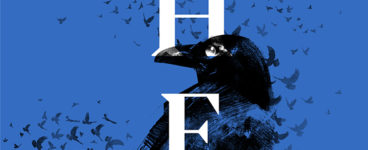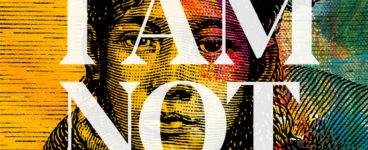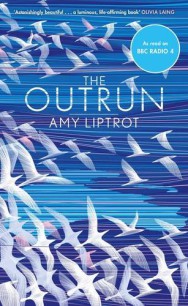‘Intense, multi-layered story of love, loss and loneliness in Berlin’
David Robinson dives into The Instant, the follow up to Amy Liptrot’s debut and literary sensation, The Outrun.
The Instant
By Amy Liptrot
Published by Canongate Books
Idly flicking through Twitter the other day, I came across a link to a website showing a map of all the world’s lighthouses, light vessels, beacons and lights at sea. On it, each of them appeared as a dot of light whose diameter varied according to the strength of its beam. They pulsed in the same colours as the actual lights they represented, with the same pattern of flashes. The bigger white, yellow, red or green blobs of light intermittently blotted out 40 mile-wide circles on the dark grey map, smaller lights that might only need to be seen from 200ft away beamed out smaller warnings alongside: watch out for this rock, that dangerous shoal.
To me, those flashing lights on a completely dark map of the world are more than just a cartographical fascinator. They expand the reach of both metaphor and imagination. We’ve never before seen anything like them: they are both post-apocalyptic (no city lights, remember, no other sign of man) and bright markers of civilisation. The lights cluster on the dangerous parts of the coastline and there are none on the safer stretches. To compare this map to the map of the world we carry in our heads, we have to use our imagination, and join the dots of light.
None of this, you might think, has anything to do with Amy Liptrot’s memoir The Instant, the sequel to her mega-successful (heaps of awards, Saoirse Ronan playing her in the film, etc etc) The Outrun. And true enough, this new intense, multi-layered story of love, loss and loneliness in Berlin never even mentions lighthouses. Yet more than any memoir I have read, it is steeped in the digital age, and transforms the form. As Liptrot writes, “Social media keeps my links with past lives and locations open. It is brilliant and confusing. I feel omniscient and thinly spread, my mind technologically enhanced and fractured …” Technologically enhanced omniscience is what you get when you look at, for example, that map of lights at sea, and it’s good to see a memoir like this which, as it dances between the natural and experiential world, flirts with the virtual one too.
As it opens, Liptrot is feeling constrained by life on Orkney. The island may have helped her back to sobriety and freed her from addictions to drink and drugs that blighted her twenties in London, but she can’t help dropping the yellow man of Google Maps onto a variety of other cities, wondering whether she can find freedom and happiness there. Later on, she will use it to revisit memories or take the edge off homesickness. In Berlin, where she doesn’t know anyone and hasn’t a job, one of the first things she does is seek out the moon on an app that tells her when and where in the sky it will appear.
The moon app, Google Maps: like the interactive lighthouse map, these are just as much a thing of wonder as, say, the smart phone that carries all our memories with us, tracks where we’ve been, and carries so much information about us that it practically IS us. Yet we have become blasé about this feast of knowledge – ‘So what if we can track where every plane is in the sky, ship in the sea or lighthouse on the coasts?’ – and one sign of that is how seldom the wonders of the digital age make it into memoirs. It’s as if writers are still working to the old rubric that their life is entirely experiential, that what we pick up via our smartphones is completely separate, to be shelved in some altogether different part of the psyche, and that the two should never mix.
Why? We don’t think like that about the natural world. Instead, we accept that if we open ourselves up to it, it will change us. That was the story of Liptrot’s The Outrun: that the northern lights, wild swimming and monitoring corncrakes on a bird conservation project can restore a young addict’s fractured soul. The book was so beautifully written that I defy anyone to read it and not wonder what happened to her next. And right enough, Liptrot’s Berlin contains a surprising amount of wildlife. Every time she cycles to the old Tempelhofer airport – built when Berlin was going to be the Nazis’ world’s capital – she sees a kestrel; every other time, a goshawk.
Yet she’s not in Berlin just for the goshawks. H is for hedonism too, or at least the smattering of it that is affordable while she looks for a casual job, moving between sublets in the cheaper, more cosmopolitan, parts of the city. She becomes a lonely nomad, checking out dating sites and finally finding a job packing expensive tea alongside a bunch of other people like her, educated misfits who all have an artistic side hustle. And finally, too, finding something that looks very much like love. Within a handful of dates, her new partner is already planning to move with her back to Orkney.
Towards the end of the book, he’s looking at her phone as, courtesy of Google Maps, they fly over her father’s farm on the island, ‘pointing out where we could walk, hide, build’. At the start, on the train south, she had used Google Earth to look back on the island too, zooming in on where she had her first kiss, or where she swam at midsummer at two o’clock in the morning, carefully noting how different places on the island were photographed by satellites in different years, how flipping between them is a kind of digital archaeology. And even before she mentions revisiting text messages and rereading emails, you’re already starting to wonder at how that how level of precision about the past changes us – and how we write about ourselves – in the present. It’s one of the key themes of the book.
If an old, obsessive love affair fizzles out for no reason, for example, it could still be burning bright in the electronic ether, its virtual reality clearer than any memory. So how do we ever forget a lost love when one’s former partner parades his new girlfriend on Facebook, when we are tagged in mutual friends’ photos, when all our emails are archived and forever searchable? The internet gives the new memoirist all of that in pin-sharp focus, without being occluded by memory loss. Whether it’s true love, lust, or even just infatuation, it’s all going to linger longer than ever. No wonder the book is dedicated ‘To the heartsick’.
Liptrot is an apophenic writer – she uses the term herself and it means a tendency to find patterns. You see it everywhere in The Instant: the way she plans to kiss her lover on every traffic island in Berlin, the way that, on her last day there, she rides the Ringbahn all the way round as a leave-taking of the six places she lived within its circle. Back in Britain, she learns how to carve letters in stone ‘My ultimate aim is to carve any own gravestone,’ she says, and you don’t get more apophenic than that.
I’ll end with a bit of apophenia of my own. When you look at the map of lights at sea – I knew you’d ask – London and Berlin are, of course, completely dark, far from the sweeping beam of any lighthouse, as is Liptrot’s current home in Hebden Bridge. But just try looking at Orkney.
The Instant by Amy Liptrot is published by Canongate Books, priced £14.99.
ALSO IN THIS ISSUE

 Hex
Hex
‘There is only one kind of weather in here – freezing cold and cloaked in darkness. The air is stagn …

 I Am Not Your Eve: A Q and A with Devika Ponnambalam
I Am Not Your Eve: A Q and A with Devika Ponnambalam
‘The book gives a voice to a girl forgotten by history’













